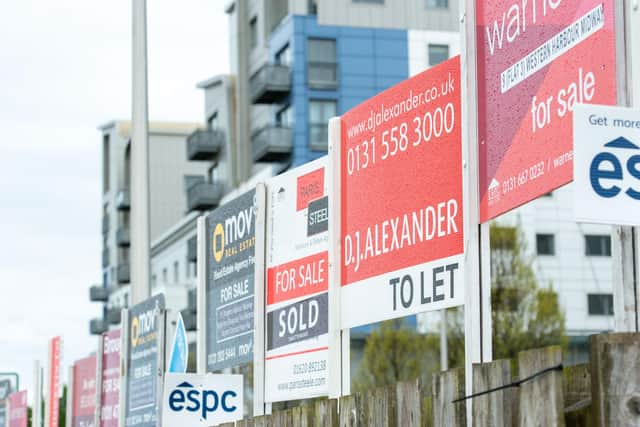Edinburgh’s ripple effect is fuelling property boom - David Alexander
The period which has bucked the long-term trend is the most recent one. This is in contrast to recent over-hyped reports of falling prices with little recognition that the reason for this reduction is because prices have risen so much over such a short period. The rise in interest rates may be slowing or even slightly reversing house price increases but given we have seen such enormous rises this is only to be expected.
Prices cannot, and will not, rise indefinitely. There comes a point where affordability meets sense and people decide that they will not simply keep bidding higher and higher prices. I have to say though that this point has taken an unusually long time to arrive in the last few years and prices have risen considerably more than anyone in the housing market would have expected.
Advertisement
Hide AdAdvertisement
Hide AdWhat is even more surprising is that there are geographic areas which have achieved very high prices over an even longer period of time.


Both Edinburgh and Glasgow have seen prices increasing at a much greater rate than the rest of the country over the last seven years. Edinburgh’s average price increase is actually lower at 21.4 per cent for the period from March 2020 to July 2023. In the 40 months prior to this from December 2016 to March 2020 average prices increased by 21.9 per cent.
Glasgow has had the greatest increase of any Scottish city since the pandemic began with average prices rising by 33.5 per cent since March 2020 compared with a 14.2 per cent rise in the 40 months to March 2020.
But it is the ripple effect which seems to be happening in and around Edinburgh that is the most fascinating. While there has been an enormous increase in prices in the capital it is the surrounding areas which have witnessed spectacular price growth. East Lothian has recorded a 59.7 per cent rise in 40 months; Fife is higher by 31.2 per cent; and West Lothian is up 29.1 per cent.
You often see a similar effect in cities where an area becomes incredibly popular, prices rise, and the immediate surrounding places see greater demand. For this to be happening with Edinburgh and all of the immediate areas around the capital is a clear trend.


Given that this has also been happening over a long period would indicate that Scotland’s capital is experiencing growth far exceeding demand which is filtering through into adjacent areas almost creating a similar situation to London and the South-East.
These areas seem to be drawing in enormous numbers of people willing and able to pay ever higher prices to live in, or within commuting distance of Edinburgh. The areas surrounding Edinburgh also meet the post-pandemic ideal of offering more rural homes, with greater outdoor space, but with easy access to the city.
Given that much of these price increases were happening prior to the pandemic this feels like a long- term trend which has been given a push by shifting home buying patterns initiated since March 2020. Whether these price rises are sustainable over the next five to ten years is debatable as such substantial increases must, at some point, become unaffordable for most people.
Advertisement
Hide AdAdvertisement
Hide AdBut high levels of employment coupled with interest rates – which although higher than before are still substantially lower in historic terms – means that many homeowners are able to pay more simply to get the house that they want. There will be a stabilising of prices and a return to lower annual increases, but we may not be at that point just yet.
David Alexander is CEO of DJ Alexander Scotland Ltd
Comments
Want to join the conversation? Please or to comment on this article.